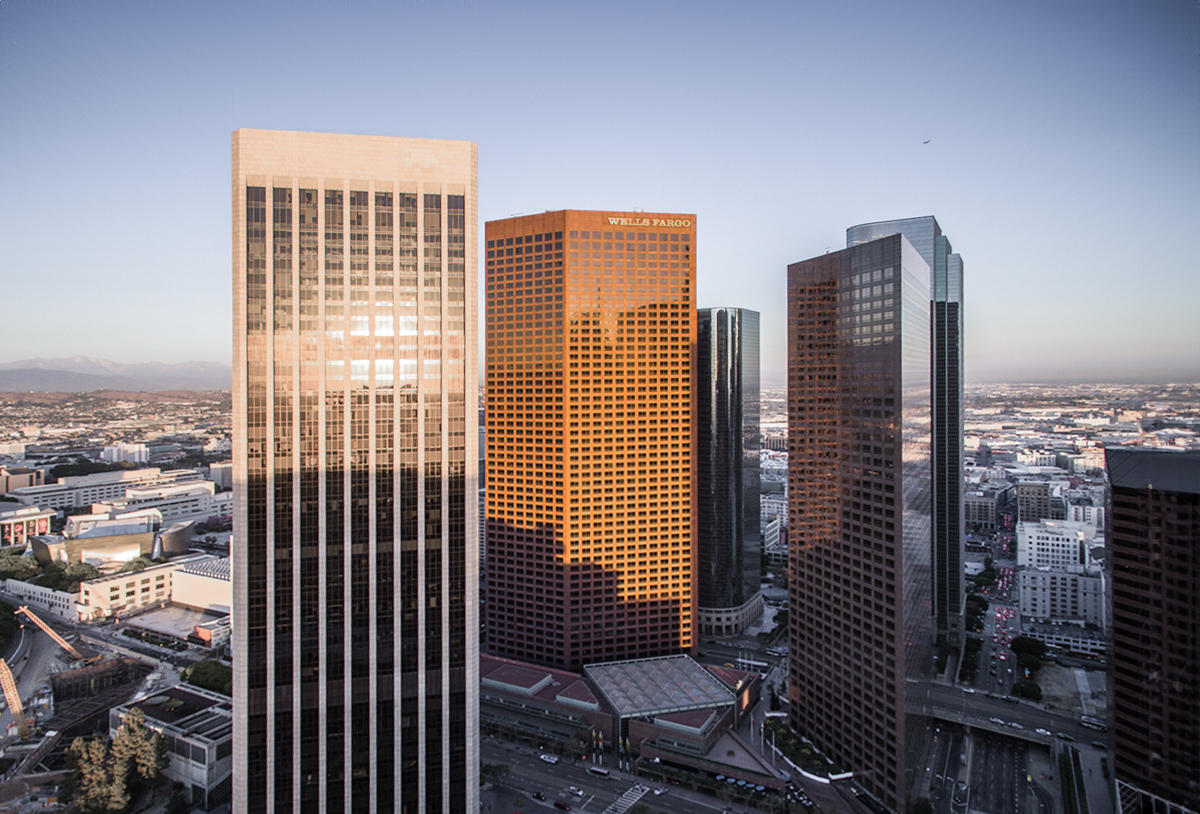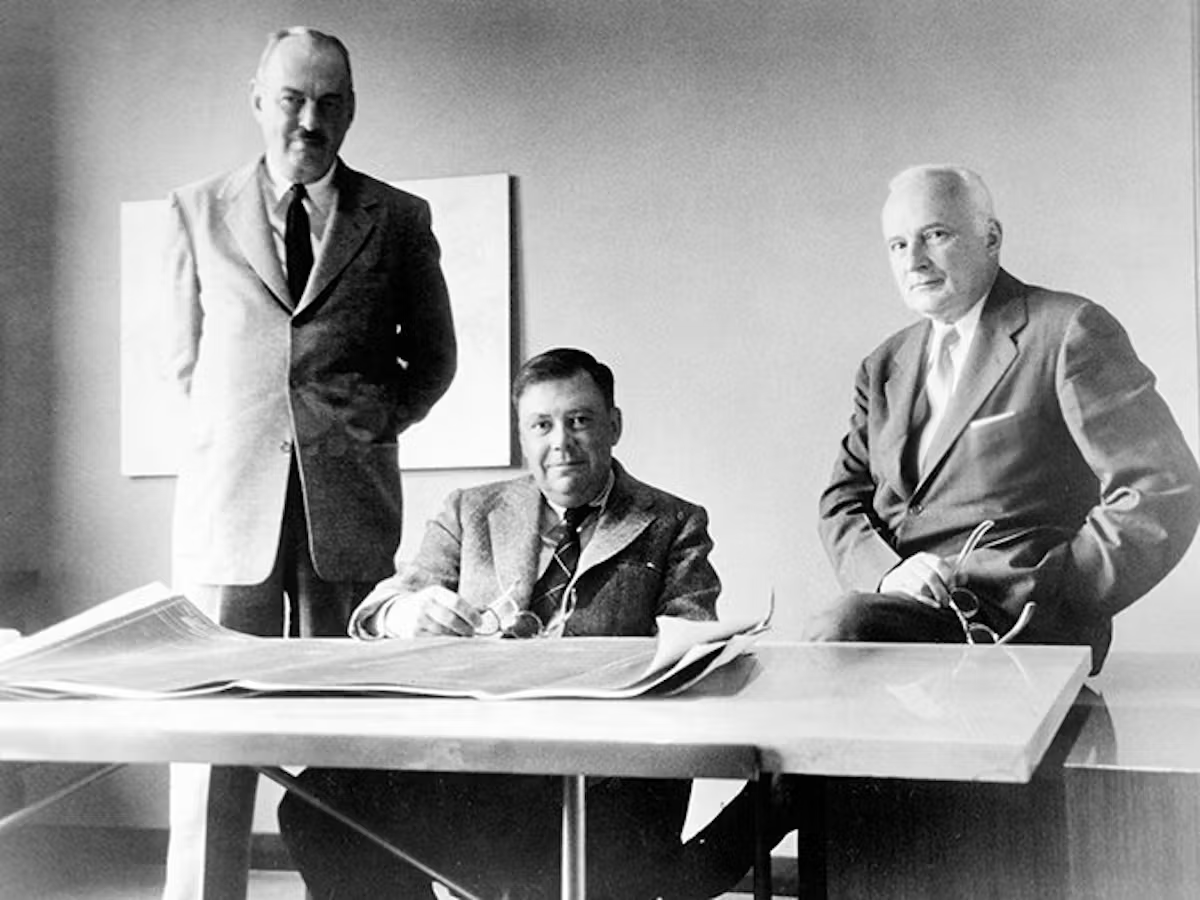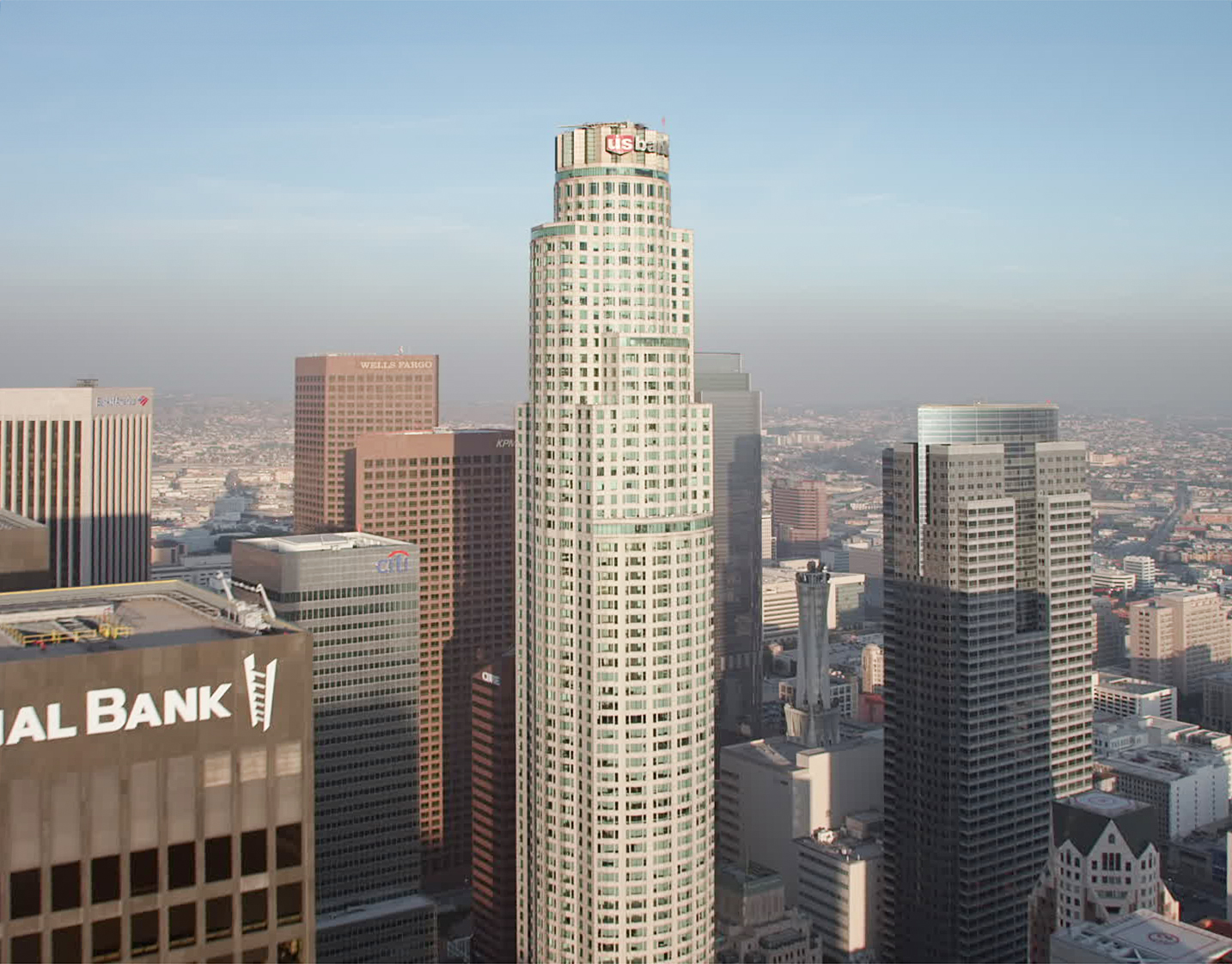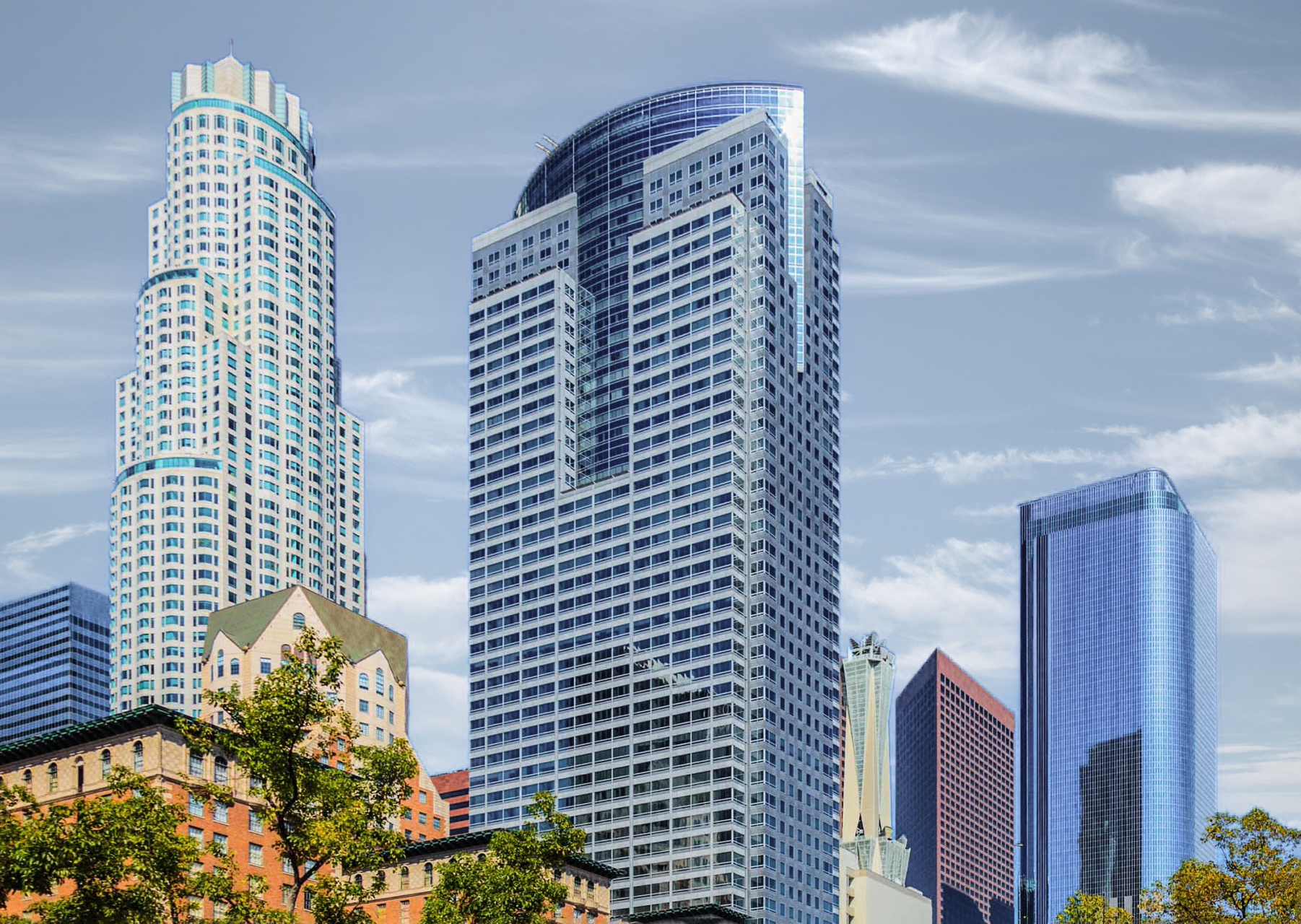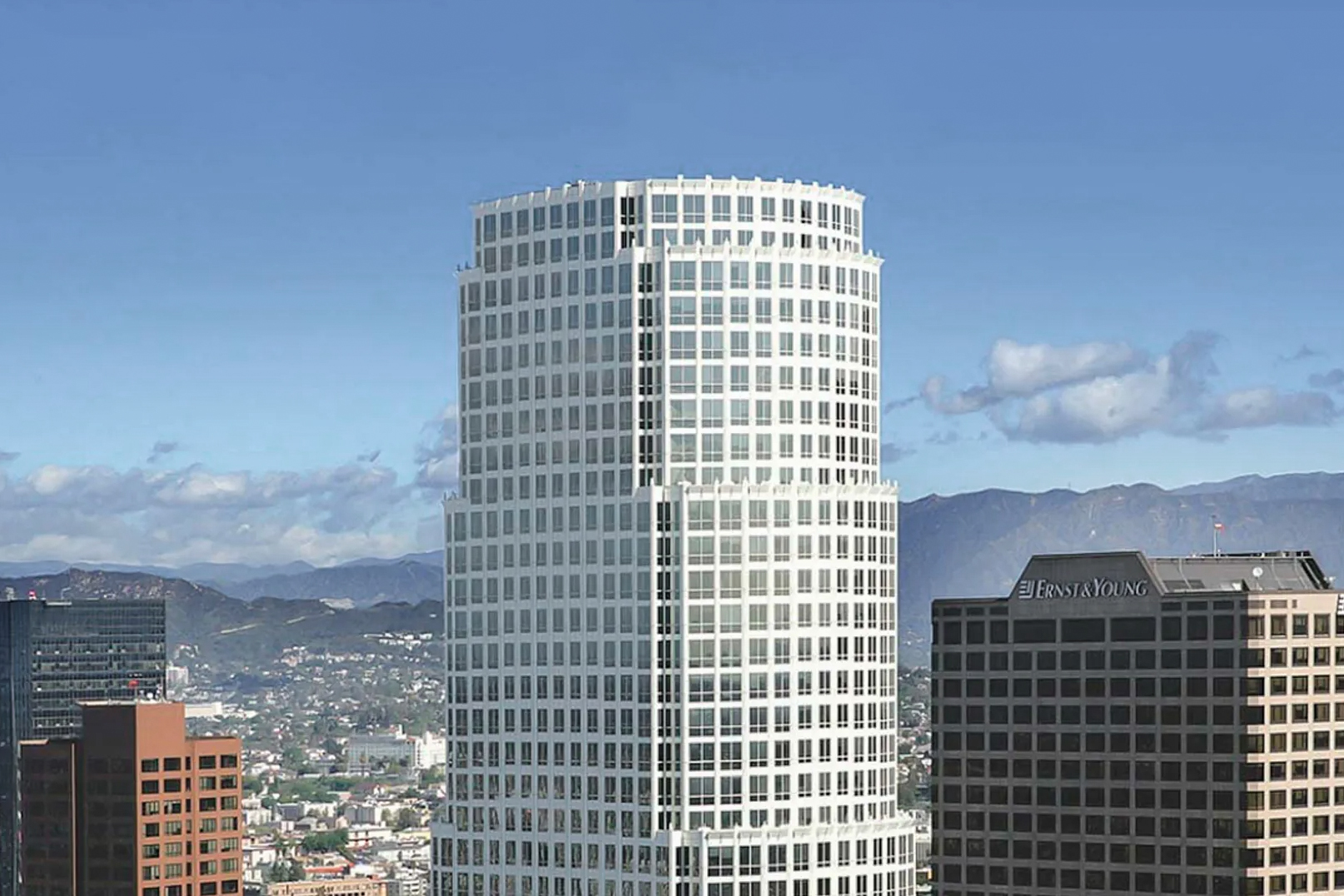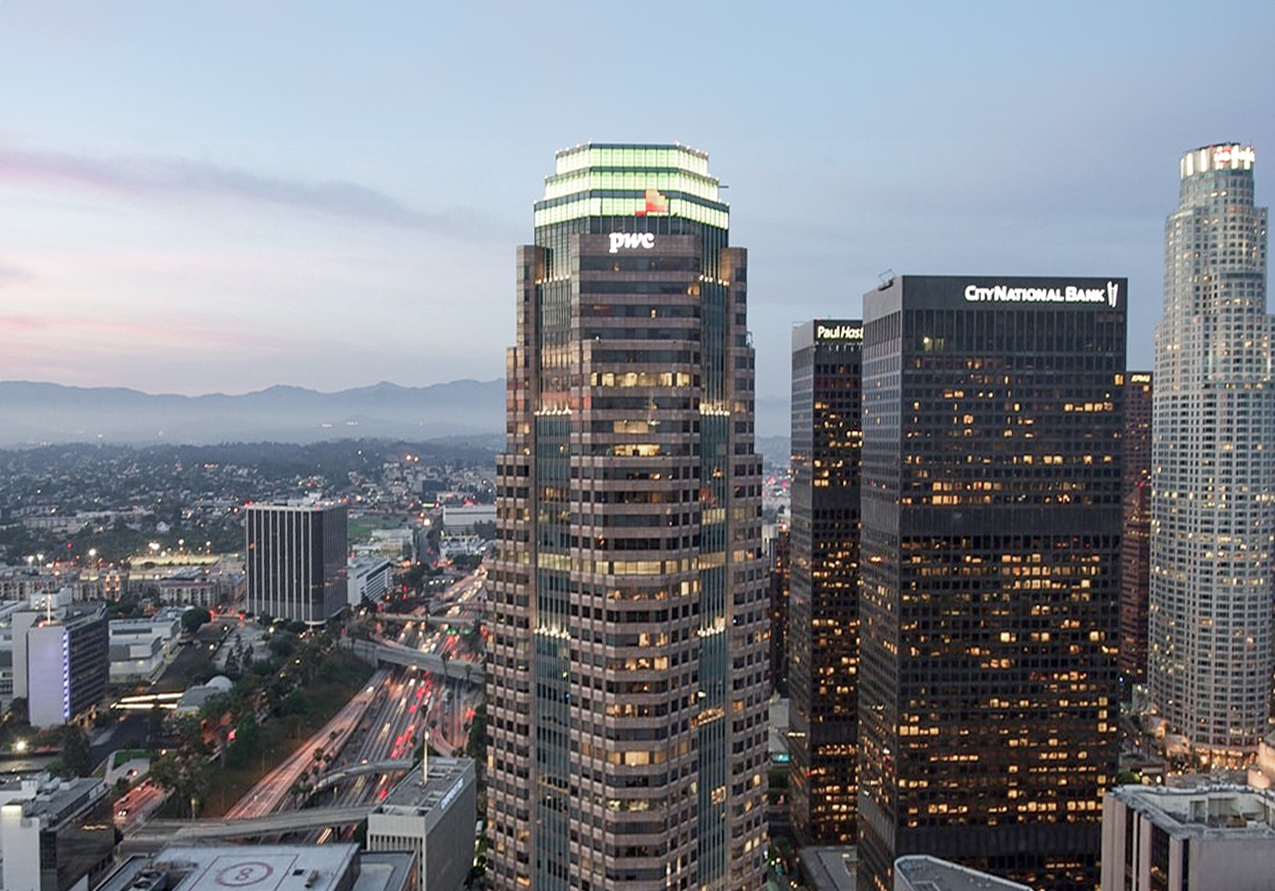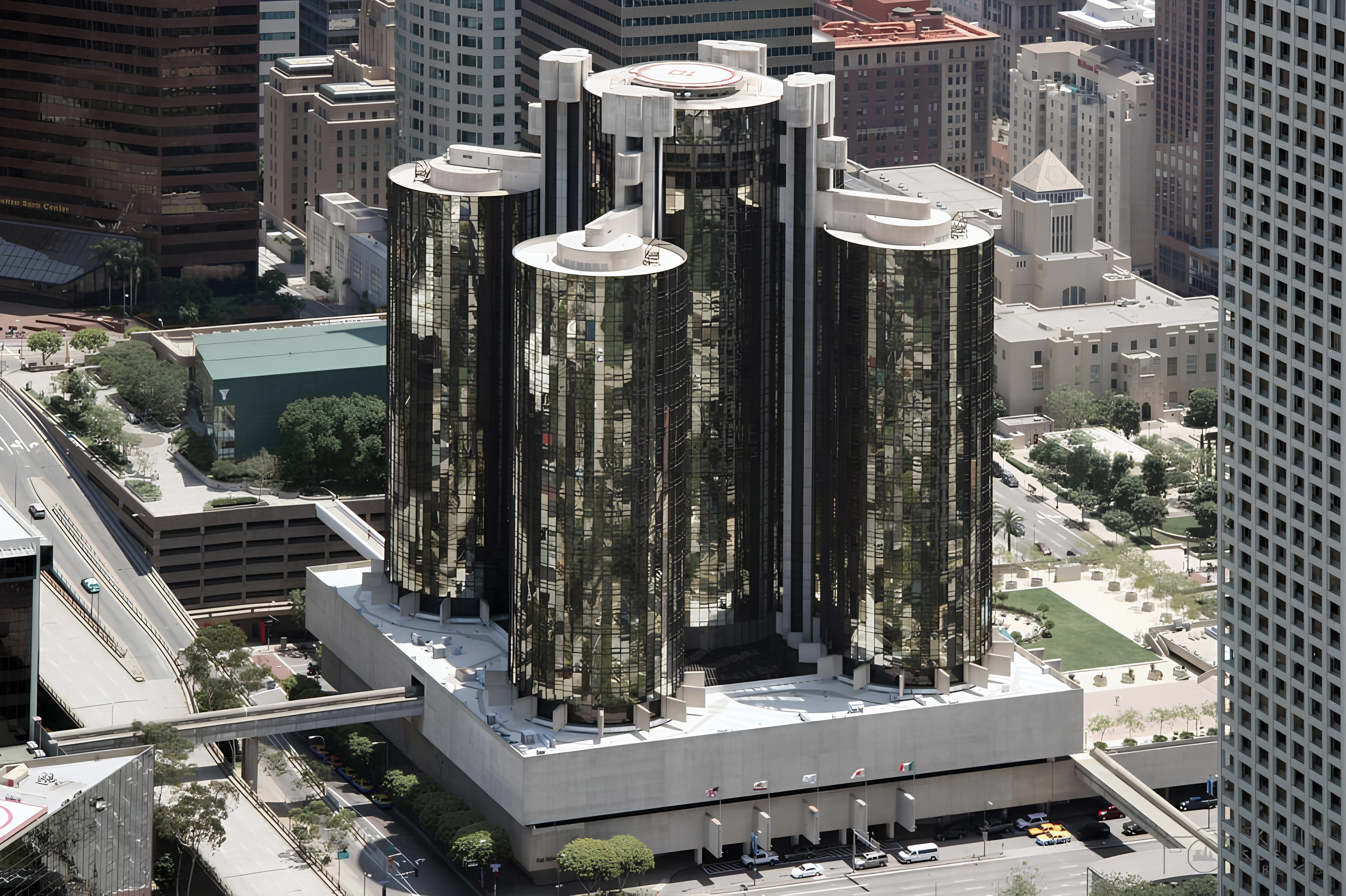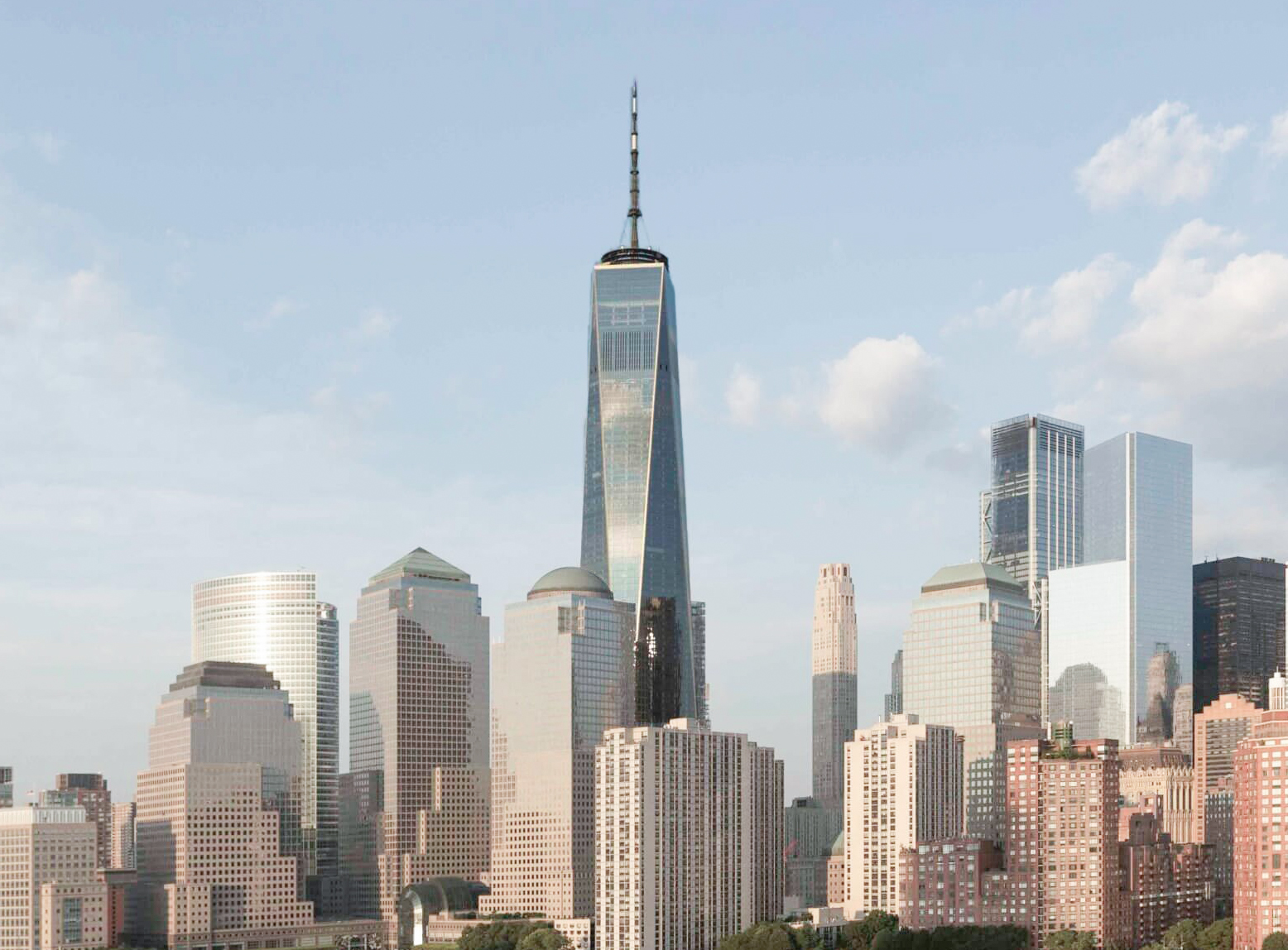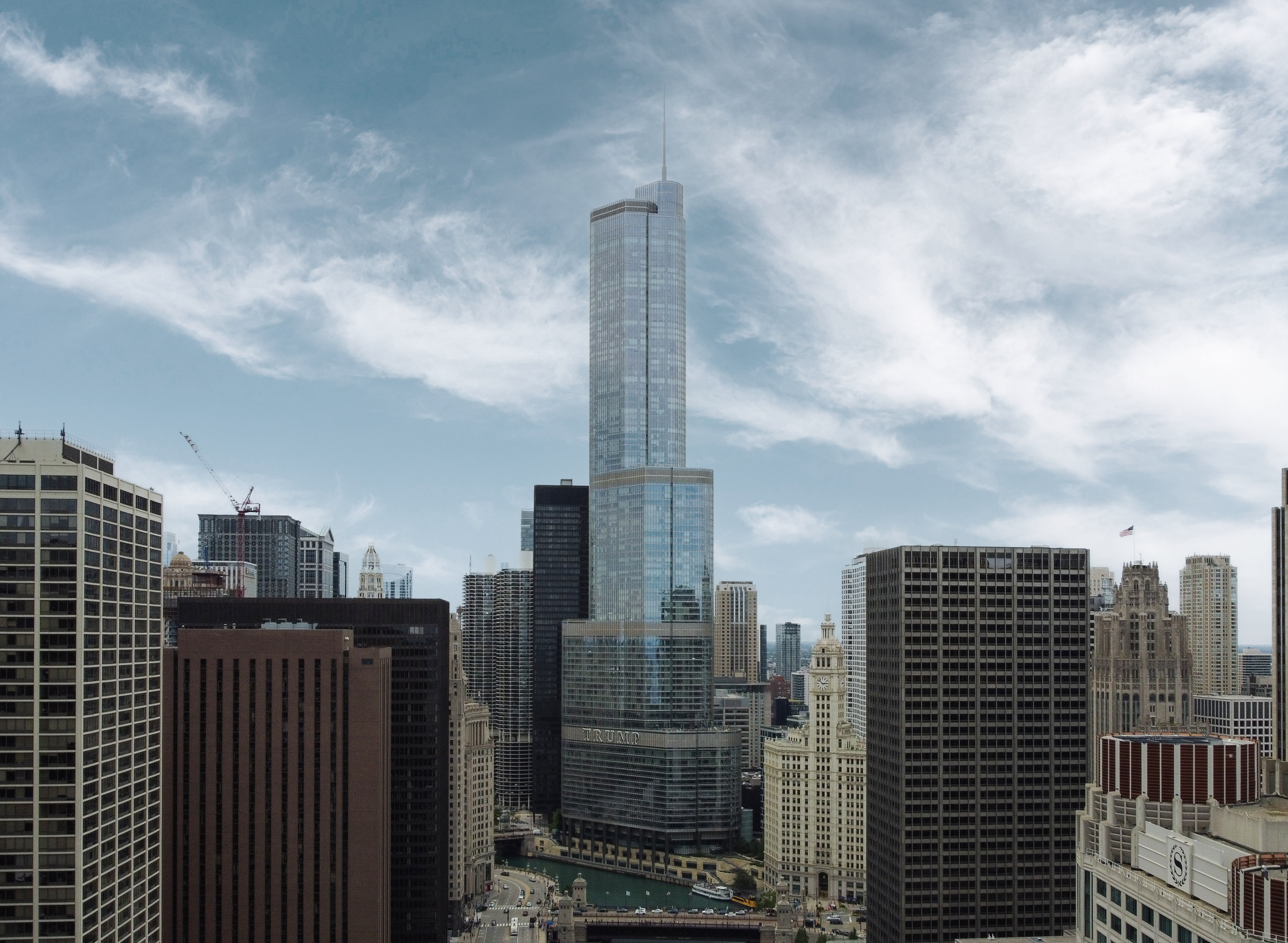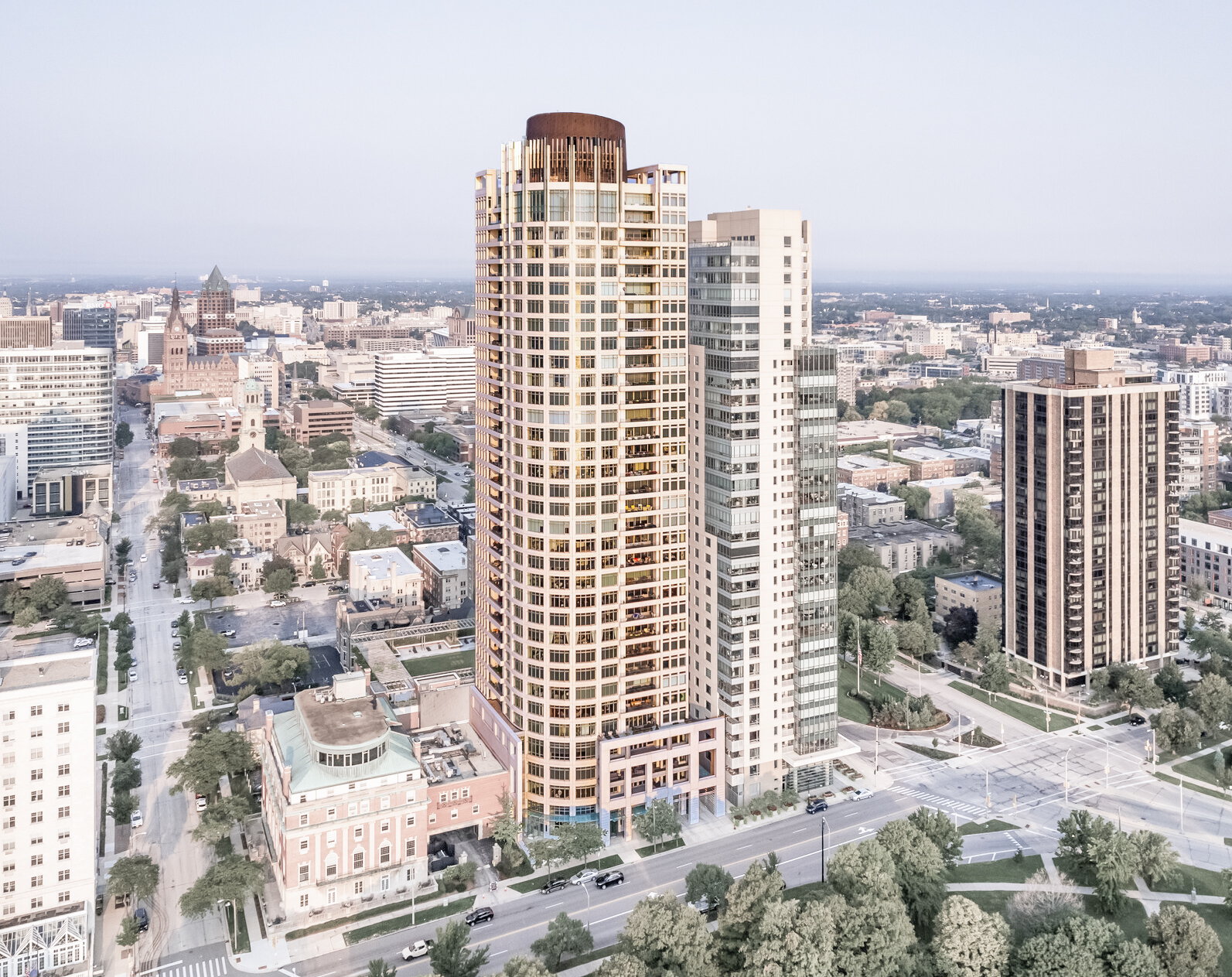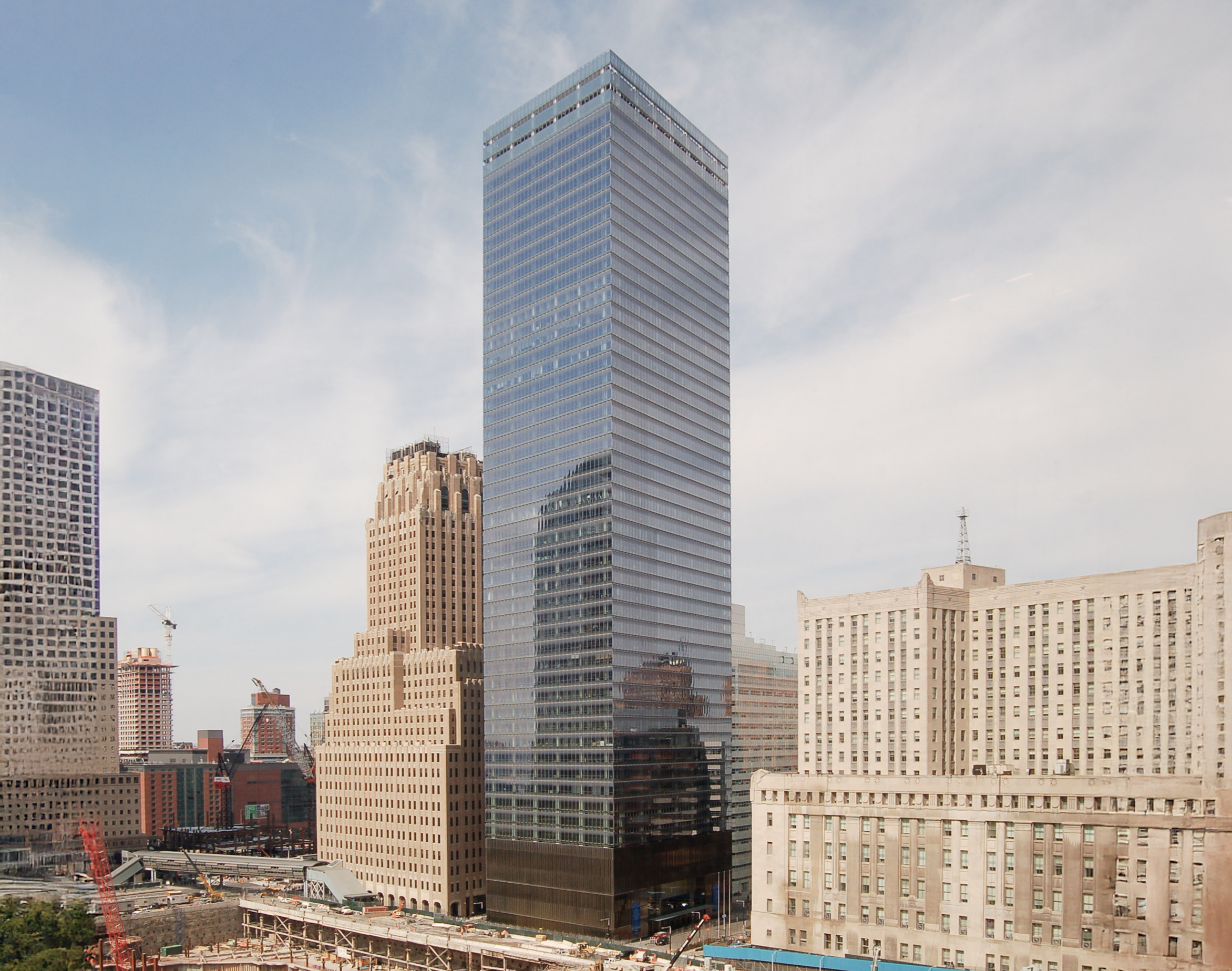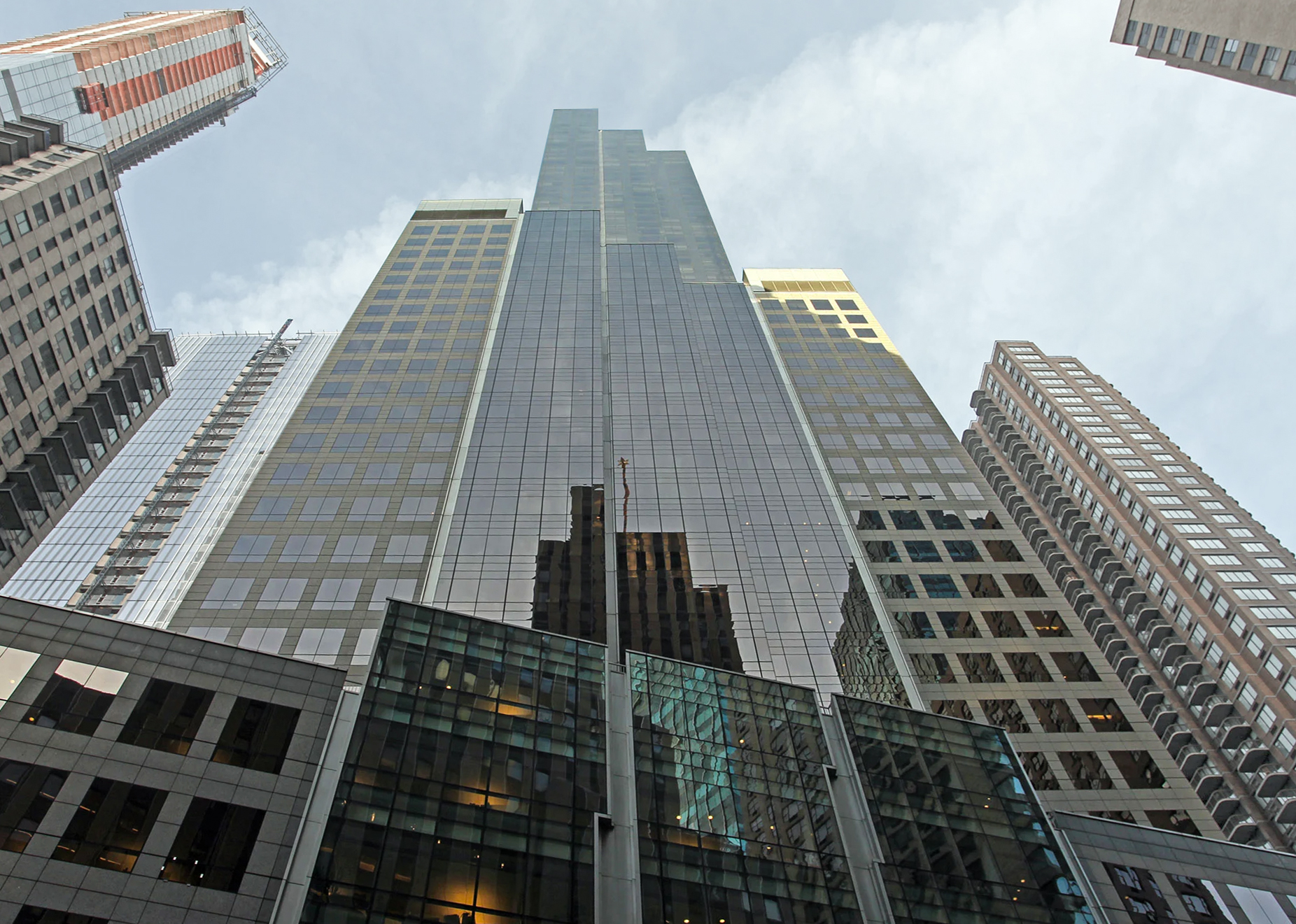The Wells Fargo Tower is a Postmodernist skyscraper designed by Skidmore, Owings & Merrill, and built between 1981 and 1983 in Los Angeles, CA.
Wells Fargo Tower is not the only name you might know this building by though. It is common for companies to want to attach their names to iconic buildings when they move in, or for the general public to come up with nicknames, and this one is no exception. The building has changed names several times over the years, and is also known as:
- Crocker Bank Center North between 1983 and 1986.
- Wells Fargo North Tower between 1986 and 0.
- Wells Fargo Center I.
Its precise street address is 333 S. Grand Avenue, Los Angeles, CA. You can also find it on the map here.
In 1986 the Wells Fargo Tower was awarded with the BOMA Office Building of the Year Award.
The Wells Fargo Tower is part of the Wells Fargo Center, together with the KPMG Tower to which it is connected by a three-story glass atrium. .
The building underwent a major restoration between 2018 and 2019. The architect commissioned to undertake this restoration was Skidmore, Owings & Merrill.
